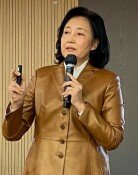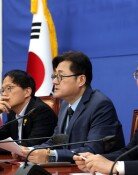Seoul should not be swayed over ‘3rd candidate site’
Seoul should not be swayed over ‘3rd candidate site’
Posted August. 23, 2016 06:58,
Updated August. 23, 2016 07:03
In a press conference on Monday, Kim Hang-gon, mayor of Seongju County, officially requested the government to designate a third location that is appropriate as the THAAD deployment site, other than the Seongsan artillery base. The mayor indicated that the county will accept the THAAD deployment within Seongju, if THAAD will not be deployed at a location where some 20,000 residents will suffer diverse damages within a 1.5-km radius from the artillery base, which the defense ministry had initially announced as the "optimal site." Mayor Kim took a step in the right direction when he urged those who are opposed to the THAAD deployment decision to use "wise judgment," by saying, “Opposing the measure that goes the extreme without presenting an alternative cannot achieve fundamental resolution to the problem.”
The defense ministry has tentatively picked the Lotte Skyhill Seongju Country Club site as an alternative and is reportedly persuading the U.S. military. The new site, located at 680 meters above sea level, is situated higher than the Seongsan artillery base (383 meters above sea level), has fewer civilian households nearby, and thus is relatively immune to controversy of potential harmful effects of electromagnetic wave from the THAAD radars. However, the Gimcheon civic group, and the anti-THAAD committee for Nongso-myeon and Yulgok-dong in Gimcheon neighboring the golf course held a candlelight vigil and started struggle against the THAAD deployment on Saturday.
It lacks legal ground and justification for Gimcheon residents to oppose the THAAD deployment when the anti-missile system is to be deployed within Seongju County. Unlike Seongju County, which opposed "external’ forces" intervention, the Gimcheon civic group is comprised of 11 organizations including Gimcheon branches of the Korea tuckers union, the rail workers union, the Korea health and medical workers’ union, and the Korea teachers’ and education workers union, and as a result struggle could get prolonged, as was the case at Gangjeong Village in Jeju against the construction of a naval base there.
Controversy over THAAD escalated due in large part to the defense ministry’s own fault. The ministry said on July 13 that it picked the Seongsan artillery base through comparative evaluation of candidate sites, simulation analysis, and onsite inspection by a South Korea-U.S. joint working level panel. Later, President Park Geun-hye told lawmakers from Daegu and North Gyeongsang Province, without elaborating, “If there is any new site that Seongju County recommends, the government will closely examine.” Did she mean that the initial comparative evaluation and simulation analysis were nothing significant?
Pyongyang started threatening Seoul with preemptive nuclear strike in response to the annual South Korea-U.S. joint Ulchi Freedom Guardian drill, which began on Monday. Presiding over the National Security Council meeting and Cabinet meeting, President Park said, “There is growing likelihood of unrest in Pyongyang amid signs of serious cracks in North Korea.” With the possibility of North Korea making provocations growing amid defections of elite group and falling public royalty to the regime, the president stressed the need for the THAAD deployment and unity of the South Korean public. Only when the government starts thorough preparation and make moves first in line with its strategy, rather than being swayed by external situations, then will Seoul be able to successfully deploy the THAAD system.
한기흥기자 eligius@donga.com







